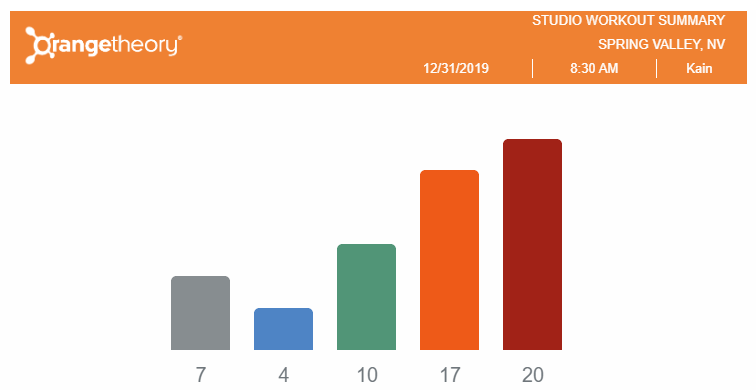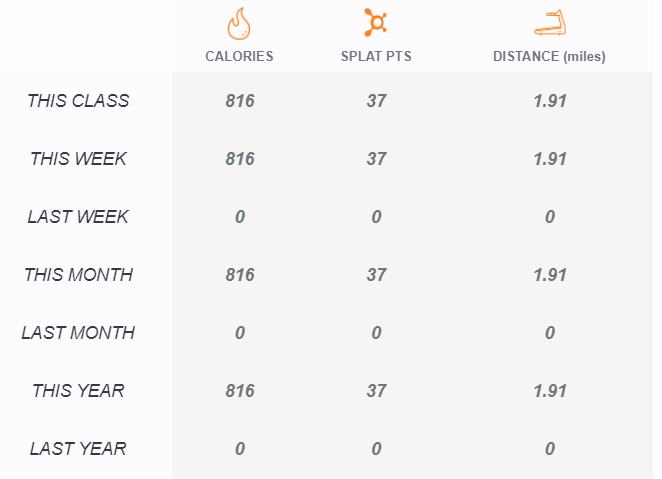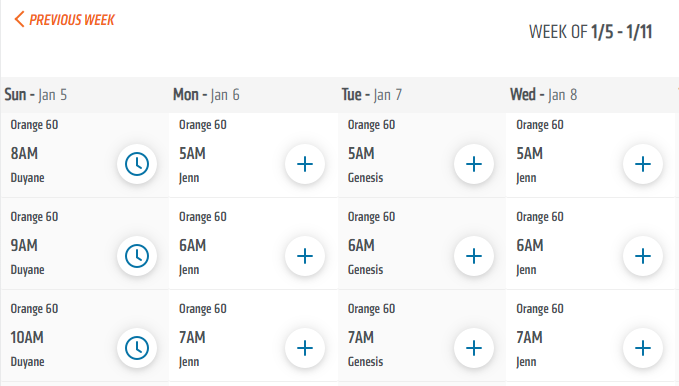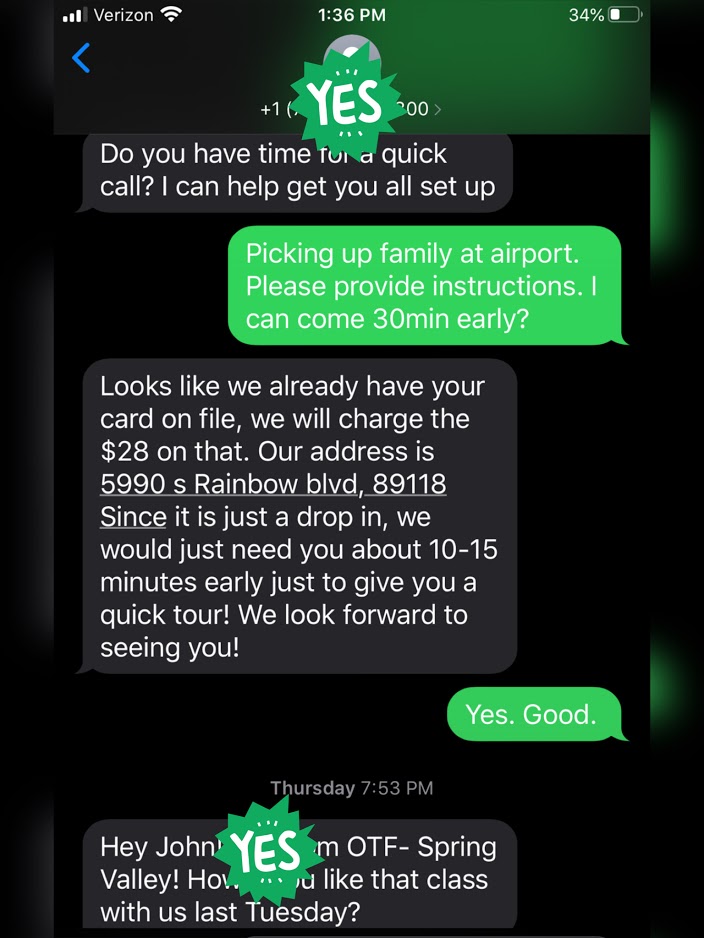While I was running, rowing, and doing push-ups – I was thinking about performance management and motivation. Yes, a B-school nerd. Orange Theory gets an “A” for their copious use of motivation techniques.
1. Goals and commitment
Orange Theory Fitness is entirely about gamification. You wear heart-rate monitors and see your heartbeat and estimated calorie burn on a large monitor. The goal is to reach a “orange” or “red” zone where you are sustaining a 84-85%+ of your maximum heart rate. The workout targets 12 minutes+ in this zone where it creates a post-work “after-burn”. Yes, free calorie burn.
You have to book your classes in advance. In fact, quite a few of them “sell out.” Also, if you want to cancel your reservation, you need to do this in advance, or you pay anyways. Think of it like a hotel reservation.
2. Feedback.
There is a large monitor which shows the names of the participants and real-time heartbeat, calorie burn, and other “key performance indicators.” Perhaps most telling, each of the blocks is brightly colored according to the % of your maximum heart rate. At any time during the work-out, you know how you are doing.
Then afterwards, I received an email with my “stats”, which included how many minutes my heart rate was in the haloed orange and red zone. It does not feel arbitrary. Like a good manager, they are telling me how I am doing.
3. Instruction and tools
The class is super coordinated and well-explained. Within 2 minutes of entering, they broke us into 2 groups (running, and non-running). For the non-running group, there were 6 different combinations of pushups, leg throws, crunches etc. . .(orange) which were interspersed with rowing (red). That seems simple enough, but it involves 20-30 transitions between different (orange) exercises, so thankfully there are instruction monitors to remind you of what is next. 
4. Competition
Yes, there are 30 of you in a room that is probably 1,500 sq ft. See the layout here. Music is booming. The coach is counting down “all out” sprints to the runners. Your name is highlighted with your heartbeat (as a % of your maximum). Even when you finish your strength workouts, you’ll feel peer-pressured to do more reps. I did.
Yes, it’s also competition with yourself. In the email summary I received (think: meeting minutes), it shows my performance trending by class / week / month / year. Yes, competition can be fun. Yes, we all like to improve.
5. Scarcity and opportunity
The class size is limited; each location has 1 room that fits 30 people. Also, many of the classes at more established franchises are full. Here’s a screenshot of the Fort Lauderdale location. The times with a “clock” icon next to them (Sunday 8, 9, 10am slots) are on a waitlist. The thinking in your mind goes, “I better book in advance.”
Now that there are 1,100 locations and growing, I wonder how well the “scarcity” appeal will work. Will there continue to be classes that are booked out, or will there become inflation?
6. Connection and Personalization
It is an experiential economy. Yes, people are willing to pay more to be treated as “special.” The sessions are not cheap – mine cost $28 for 1 hour. Yet, believe that they are doing a good job making it personal-ish. As a first timer, I received text messages the day before, and then a follow up text afterwards.
Since it is a boutique gym, it runs like a small business. Less space, less up-front investment, and only 15 employees needed to start it up. As Fast Company says, the start up costs [$320K+] is “more than a yoga studio, but far less than a traditional club.” It’s not uncommon to see people wearing Orange Theory gear, and purchasing their own heart rate monitors. Small win: they have integration with iWatches coming soon.
7. Teamwork
Let’s agree. It’s hard to get motivated to exercise. More than 2/3 of Americans are overweight or obese. So it’s a little reassuring that once you get there, you are with a “tribe” of people who want to succeed. Yes, there are motivation sayings on the walls. Also, since you are broken up into two teams, there are 12+ people doing the exact same thing you are doing. If you get lost – look to your left. If you get discouraged – look to your right. If you get curious- look at the monitor with your heartbeat, calories, and color (grey, green, blue, orange, red).
Honestly, some people love OTF. There is a r/organgetheory sub-reddit with 91,000 subscribers.
8. Focus and Results
Orange Theory Fitness makes the case that workouts are based in science. They herald the fact that they have a cardiologist on staff to review the workouts. They also have an identity: team-based, scripted workout routines with close monitoring of your heartbeat and calorie burns. Yes, lots of gamification.
This allows participants to self-select in. OTF is not pilates, or yoga, or swimming, or CrossFit. OTF is an orange box with loud music and a monitor that displays your “scores” in real time. If you want that, you can join.
As consultants, managers, and leaders, what are some of the takeaways from Orange Theory Fitness’ success? After all, this is an enormously competitive industry. By some estimates, there are 36,000 gyms/studios in the US. What is the secret sauce that helped Orange Theory Fitness beat the rest?
- Goals and commitment: Make it clear what the organization is trying to do (orange zone)
- Feedback: Make it clear where people stand; your direct reports want to know (score board)
- Instruction/tools: Give people the instructions and the tools to win (monitors)
- Competition: Yes, friendly competition works. Who doesn’t like to play games and win? (emails)
- Scarcity: Opportunities don’t linger around forever. There are times you need to step up (sign-ups)
- Personalization: We are all different. Have different strengths and aspirations. And that’s a good thing
- Teamwork: We are all social creatures. We want to belong to a tribe. Create that emotional safety
- Focus and results: Know who you are. Be so clear that your customers find you. (OTF workouts only)
Finally, I imagine that Orange Theory Fitness will change, morph, and tweak as time goes on. They are no longer a boutique niche. They’ve opened 1,100 franchises in the last 11 years.
Yes, new entrants will copy their signature cardio-tracking gamification. Yes, there are multiple workout routines online for free that mimic the OTF experience. Currently, there are 20+ locations in greater Atlanta. What happens when they are 50? Yes, they will need to adapt their offerings – get more revenue and growth from same-store-sales.
Most interestingly, the newest OTF advertisement emphasizes how the gym experience allows you to more outside the gym. Namely, the workout is not the goal – merely a means to the goal.






Love this. I am a recent OTF convert myself, having taken my first class in late September. I love it for all the reasons you talk about here; only I’m NOT a B-school nerd, so I was just enjoying the feedback, communication, the team mentality and the push toward self-improvement for just that, not the bigger picture. I agree OTF does all of it well. Also, did you really earn 37 orange and red points at your first OTF class? And burn over 800 calories? If so, “jealous”does not even begin to describe how I feel! Talk about an All Out!
Thanks for reading. Yes, I think I was trying to not get out-run by my two younger sisters.